If you apply these 4 kinds of fertilizers to roses, you can pick them 4 times a year. Do you believe it?
Perhaps in other places, farmers would just plant a few roses for viewing and decoration purposes, but in Yunnan in the southwest region, it not only has a natural climate of "four seasons like spring", but also has the largest flower trading market in Asia - Dounan Flower Market. This determines that roses can be widely planted as an economic crop by local farmers.
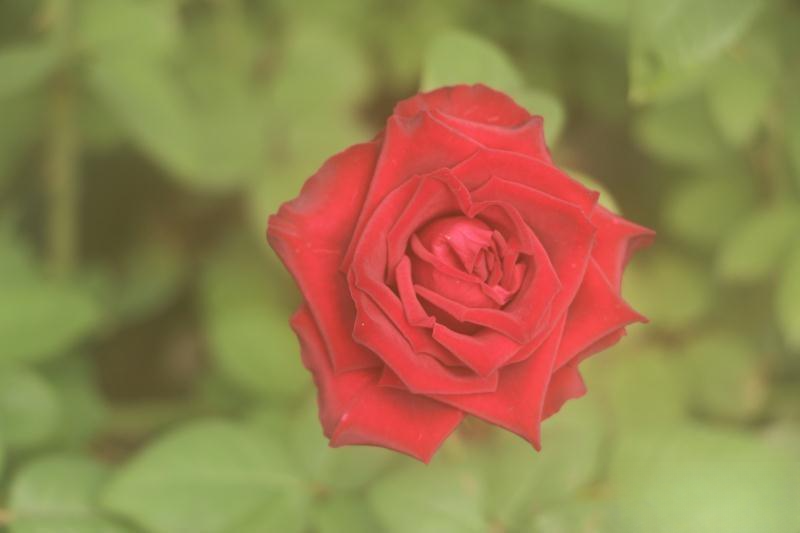
Roses that have bloomed
In the past two years, as the price of roses has been rising, more and more farmers have started to grow roses. But careful people will always find that some people can pick roses 4 times a year, while their own roses can only be picked 2-3 times. In fact, how many times a rose can be harvested is mainly determined by the root system of the rose. In other words, we can only ensure the number of harvests if the root system of the rose absorbs enough nutrients, and the most direct way to let the root system of the rose absorb enough nutrients is to fertilize properly. So, how should we fertilize roses?
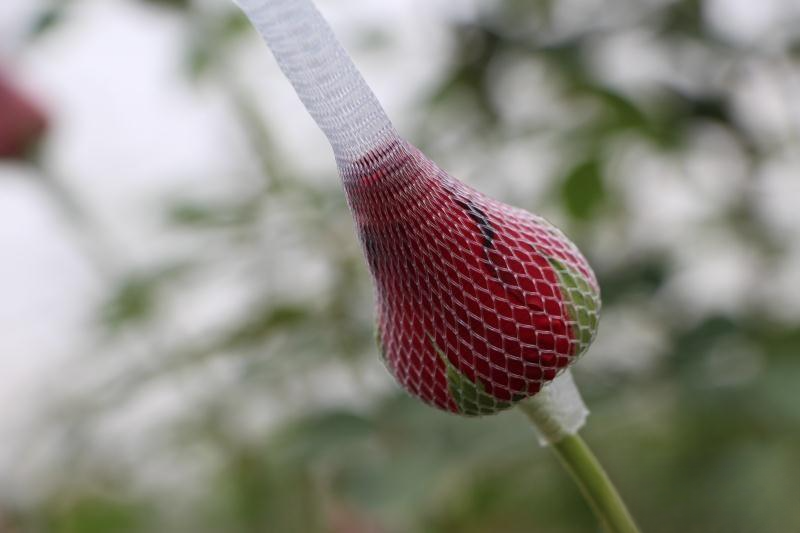
Roses in a net - Corolla
Experienced flower growers know that the time and amount of fertilization for roses need to be determined according to the growth status of the roses. Generally speaking, there are 4 types of fertilizers that must be applied to roses, namely:
1. Base fertilizer
2. Bud-promoting fertilizer
3. Leaf expansion fertilizer
4. Flower-preserving fertilizer
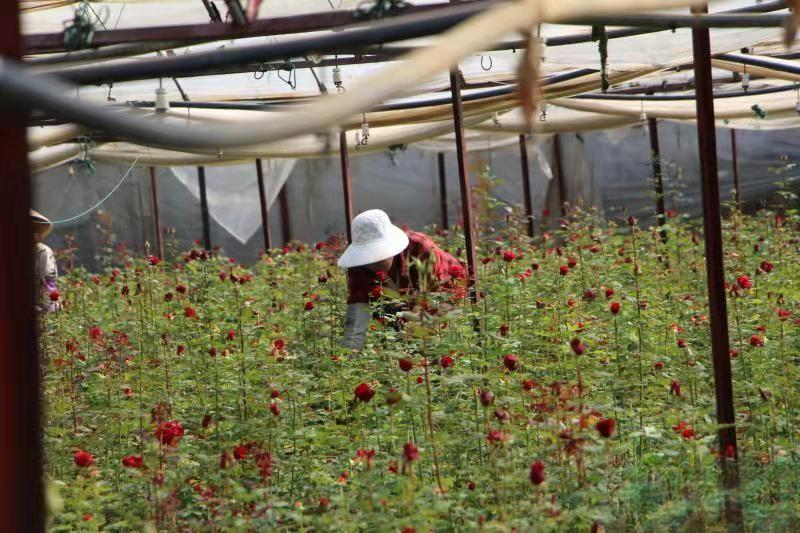
Flower farmers working in the rose field
base fertilizer
Roses are perennial plants, especially when planted on a large scale, and it takes 4-5 years to replace rose seedlings. By applying basal fertilizer, we can meet the nutrient needs of roses from budding to flowering, prevent roses from lacking fertilizer during growth, and prevent roses from premature aging. It can be said that "basal fertilizer is an indirect reflection of rose yield". Therefore, when planting roses, you must apply enough basal fertilizer.
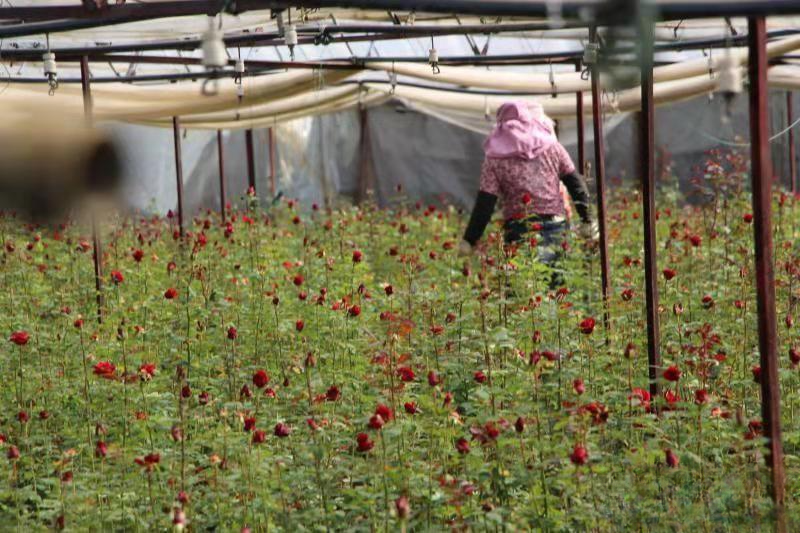
Flower farmers harvesting roses
Regarding the time to apply basal fertilizer, it is generally before planting roses or after picking roses. The reason why roses need to be applied after picking is that "every time a rose is picked, it will enter the next round of growth cycle", which is similar to the "every time a crop of leeks is harvested, another crop will grow". In other words, basal fertilizer should be applied as many times as roses are picked. As for the choice of basal fertilizer, well-rotted farmyard manure is the best for the following reasons:
① Farmyard manure contains a large amount of mineral elements. Applying farmyard manure can save the trouble of applying micro-fertilizer to roses.
② The effectiveness of farmyard manure lasts longer, and one application of fertilizer can maintain the nutrient needs of roses throughout their entire growth cycle.
③ Farmyard manure has a slow effect. Freshly harvested roses need to recover. Once fertilizers with faster effects are applied, fertilizer damage will occur. This is just like the fact that we cannot eat nutritious foods during a serious illness.
④Farmyard manure can enhance the air permeability of the soil, make the soil loose, which is more conducive to the growth and development of the rose root system, and allow the rose root system to absorb enough nutrients, so that it can naturally accumulate strength for growth.
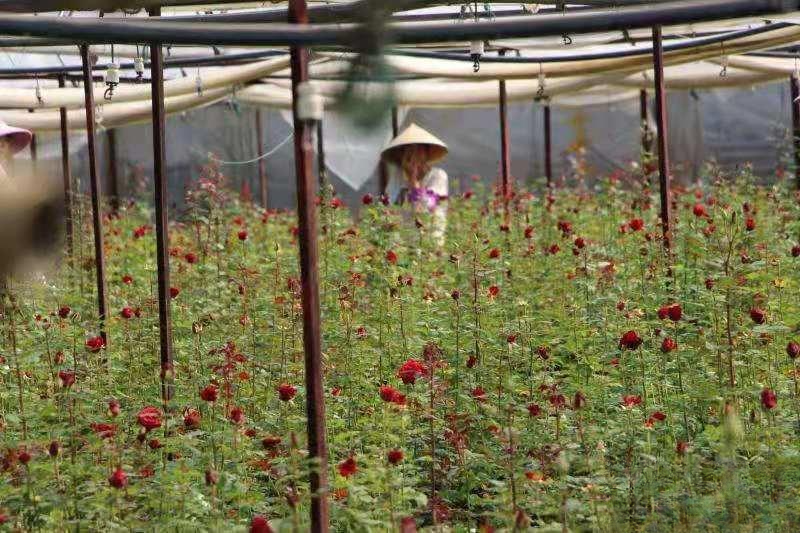
Flower farmers harvesting roses
Although farmyard manure is the best fertilizer, improper use will have a counterproductive effect. Therefore, when using farmyard manure as base fertilizer for roses, you need to pay attention to the following matters:
① The farmyard manure must be fully decomposed to prevent it from carrying pathogens and insect eggs, and to prevent it from fermenting in the soil and causing fertilizer damage.
② It is strictly forbidden to use the manure of livestock such as pigs, chickens, and ducks that are fed heavier feeds as base fertilizer for roses. The reason is that these fertilizers contain a large amount of heavy metals, hormones, etc., and roses are more sensitive to these substances.
③When applying farmyard manure to roses, it is best to combine it with watering. The combination of water and fertilizer will make the fertilizer more effective.
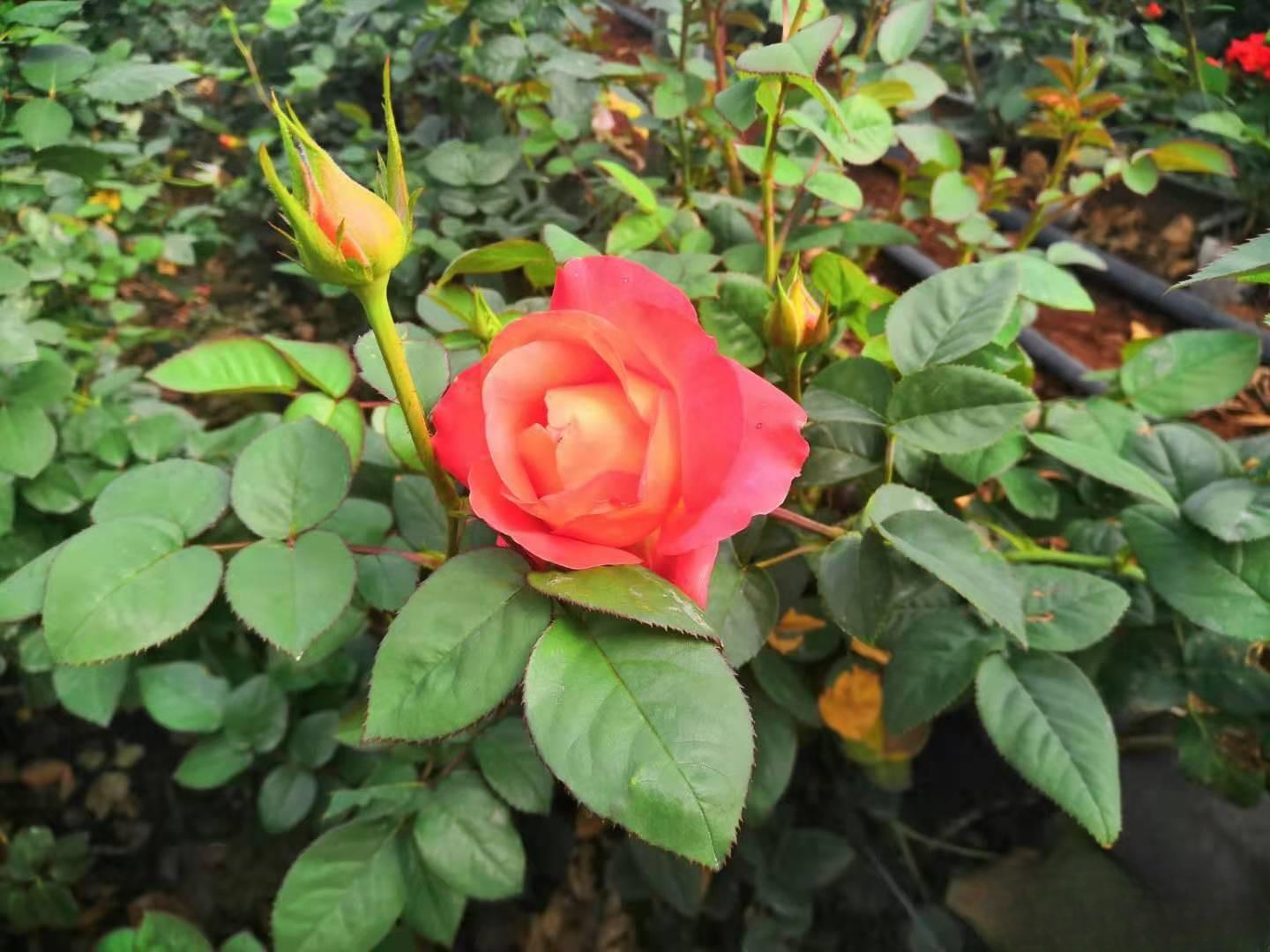
Roses to pick
Bud-promoting fertilizer
There are two main purposes for applying bud-promoting fertilizer to roses: first, to promote the differentiation of rose buds, so that roses can differentiate, grow and bloom earlier, and achieve "one plant with multiple branches" to prepare for high yields; second, to promote the growth of rose roots, accumulate more nutrients for the rose roots, and ultimately achieve the purpose of root nourishment and root protection. It can be said that "bud-promoting fertilizer is the guarantee of the yield of the current crop of roses."

When you see rose buds sprouting, you can apply bud-promoting fertilizer
Regarding the application time of bud-promoting fertilizer, it is generally applied after the roses are harvested and before the flower buds differentiate. If the flower buds of the roses differentiate sparsely, a second topdressing can be performed within 10 days after fertilization. However, when applying the second topdressing, remember that the topdressing time cannot be too late, otherwise, the fertilizer will be wasted and the purpose of applying bud-promoting fertilizer will not be achieved. Generally, the time is based on the absence of differentiated leaves. As for the selection of bud-promoting fertilizer, the high-phosphorus 10-43-10+1 (Mg) macro-element water-soluble fertilizer is the best for the following reasons:
① Water-soluble fertilizer dissolves quickly and can be quickly absorbed by roses after dilution without causing rose seedling burn.
② Roses have the highest demand for phosphorus fertilizer during the flower bud differentiation period. Adequate phosphorus fertilizer (43) can promote flower bud differentiation.
③ Nitrogen fertilizer (10) can promote the growth of flower buds and help roses to quickly expand their leaves.
④ Potassium fertilizer (10) can improve the disease resistance of roses and reduce the diseases of roses.
⑤ Roses need trace elements to grow, which can prevent roses from suffering from magnesium deficiency (1).
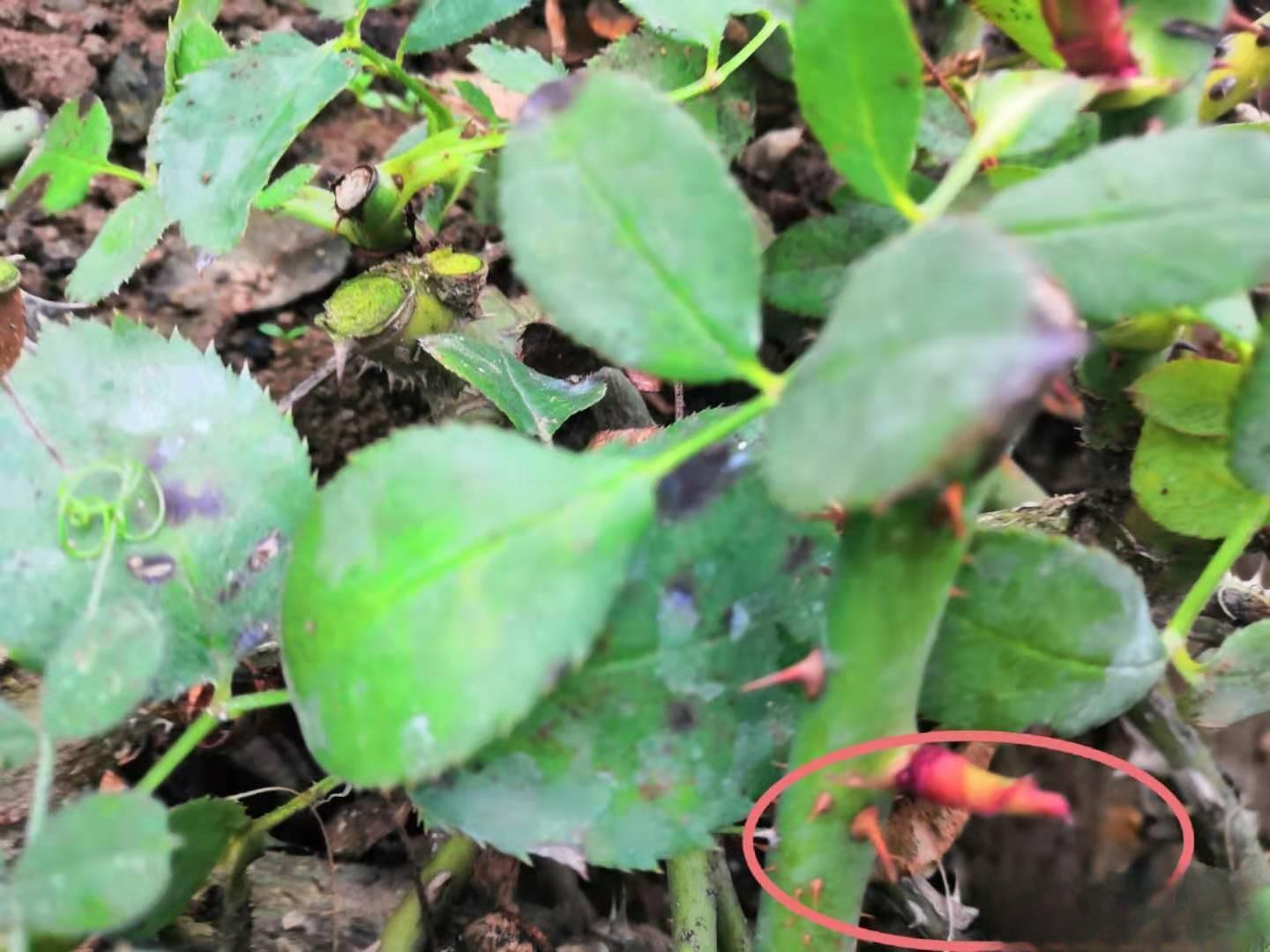
Before the flower buds begin to unfold their leaves, the application of bud-promoting fertilizer should be completed.
Leaf expansion fertilizer
There are three main purposes for applying leaf-expanding fertilizer to roses: first, to promote the growth of rose plants and make the rose plants grow strong to increase the utilization rate of rose buds; second, to promote the growth of rose leaves and allow the leaves to accumulate nutrients through photosynthesis; third, to prevent rose plants from lodging, breaking buds, etc. during the growth process, thereby achieving the purpose of increasing rose yields.
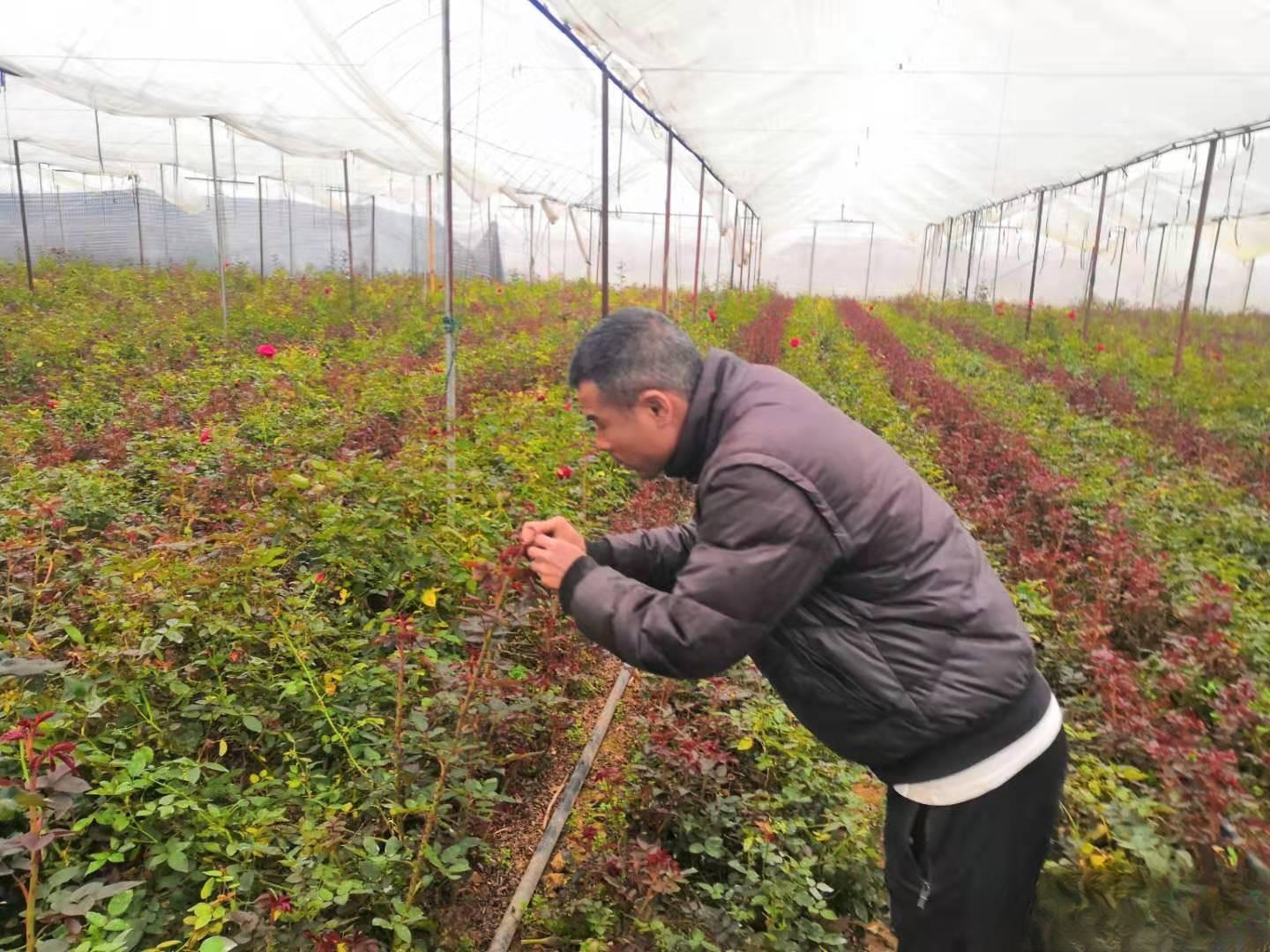
Observing the growth of rose plants
Regarding the time to apply leaf-expanding fertilizer, it is generally applied after the flower buds of roses have been differentiated and before the "top" is formed (before the flower buds are seen). Since roses require a higher amount of fertilizer after the flower buds have differentiated, which is the period of their growth in which they require the most fertilizer, leaf-expanding fertilizer for roses needs to be applied 3-5 times depending on the growth of the plant, and the interval between fertilization is generally no more than 2 weeks. As for the choice of fertilizer for leaf-expanding fertilizer, a balanced 19-19-19 macro-element water-soluble fertilizer is the best for the following reasons:
①The application of multiple nutrients can better meet the fertilizer needs of roses.
② Nitrogen fertilizer (19) promotes the vertical growth of rose plants.
③ Phosphorus fertilizer (19) promotes the growth of rose plants, the development of root systems, and prevents the growth of rose plants from becoming too tall.
④ Potassium fertilizer (19) prepares for the formation of rose buds and increases the number of petals.
★When the rose plants grow slowly, you can apply stable nitrogen fertilizer to promote the growth of the rose plants to ensure that the roses can grow to a suitable picking height before the buds form.
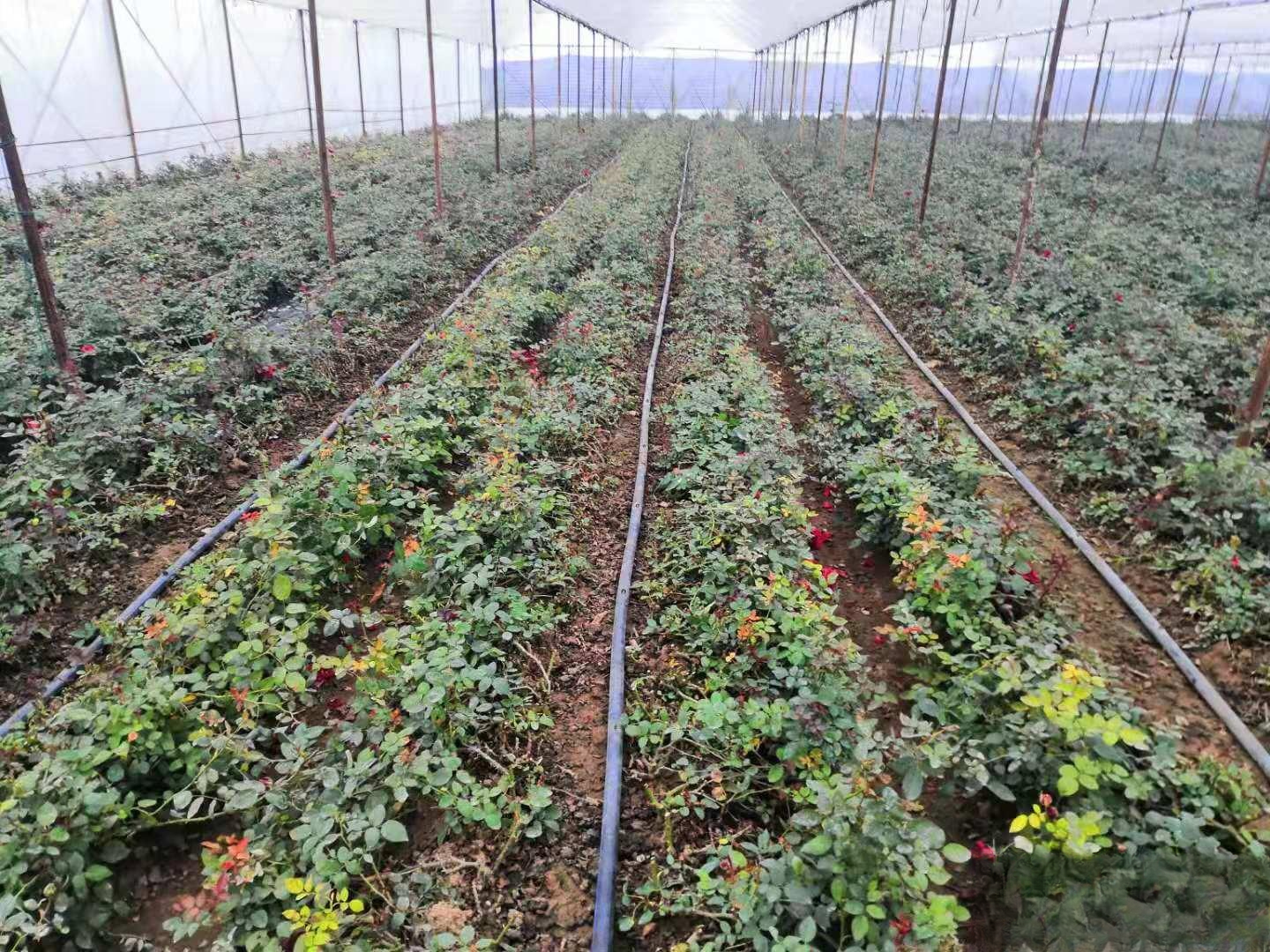
Rose plant growth stages
Flower Fertilizer
There are three purposes for applying flower-preserving fertilizer to roses: first, to promote early flowering and early market launch of roses, to avoid the phenomenon of roses not blooming; second, to increase the weight and thickness of rose petals, thereby improving the quality of roses and preventing the petals from falling off during transportation; third, to enhance the disease and insect resistance of roses, to prevent roses from diseases and insect pests such as powdery mildew and red spiders. It can be said that "leaf-expanding fertilizer is the guarantee of rose quality".
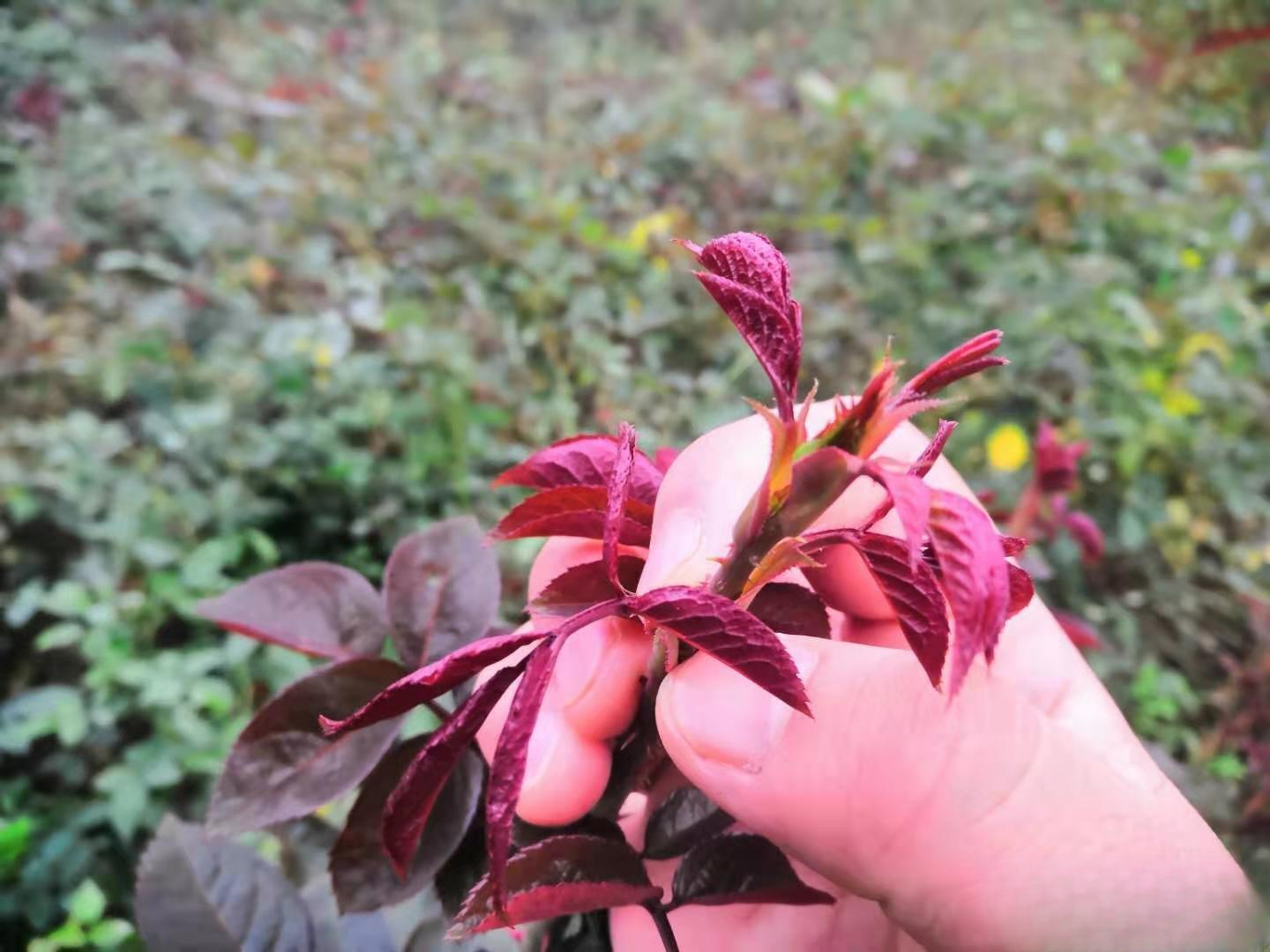
After you see the rose "top", you can start applying flower-preserving fertilizer.
Regarding the time to apply flower-preserving fertilizer, generally, you can apply fertilizer after you see the "top" (flower bud) of the rose. Under normal circumstances, flower-preserving fertilizer needs to be applied twice in a row, and the interval between fertilization cannot exceed 10 days. When applying fertilizer for the second time, you should also pay attention to not applying fertilizer too late, generally when the flower buds are obviously swollen. If the second topdressing is done after the petals are formed, the purpose of fertilization will not be achieved. As for the choice of fertilizer for flower-preserving fertilizer, the high-potassium type 10-8-40+1 (Mg) macro-element water-soluble fertilizer is the best, for the following reasons:
① Roses have the highest requirement for potassium fertilizer during their flowering period. Sufficient potassium fertilizer (40) can improve roses' disease resistance and the quality of their petals.
② Nitrogen fertilizer (10) maintains the growth of rose plants and prevents rose plants from wilting during the flowering period.
③ Phosphorus fertilizer (8) meets the nutrient needs of the rose root system and prepares for the next round of flower bud differentiation.
④ Rose petals require trace elements, and supplementing with magnesium (1) can improve the quality of roses.
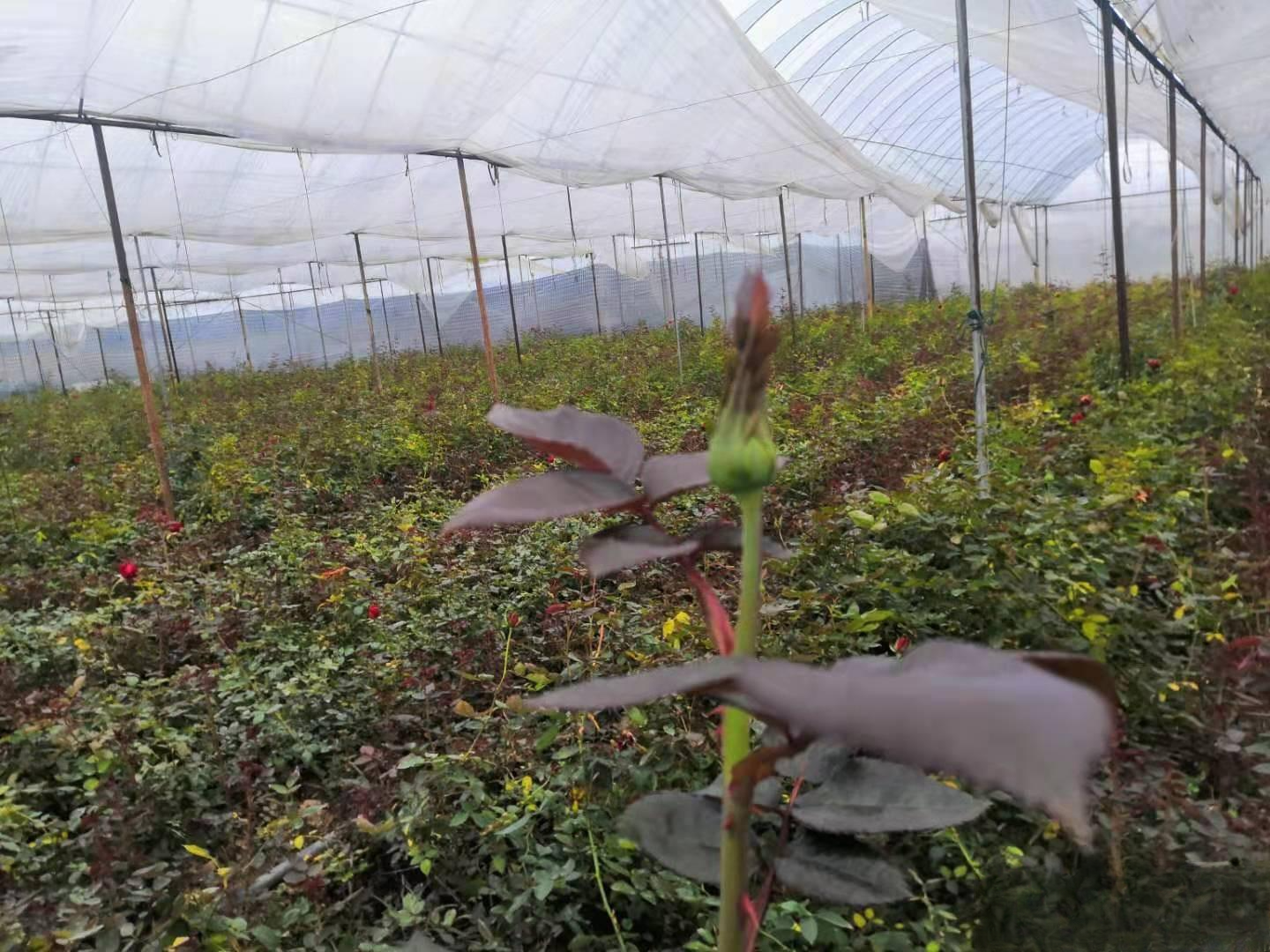
When you see the rose "top" begin to swell, apply the flower-preserving fertilizer for the second time.
What should you pay attention to when fertilizing roses?
① Roses like fertilizer, but they are sensitive to fertilizer, so be careful when using compound fertilizers for broadcasting. It is recommended to use water-soluble fertilizers instead.
② When fertilizing roses, it is important to apply small amounts of fertilizer frequently to prevent root burn caused by excessive fertilizer application at one time. Therefore, the recommended fertilizer application rate per mu of the above fertilizers is 5-10KG/time.
③When fertilizing roses, remember not to apply nitrogen fertilizer exclusively, otherwise, the roses will not only grow too tall, but will also suffer from serious diseases and insect pests.
④ It is recommended to fertilize roses in sunny weather and try to avoid rainy weather to prevent the fertilizer effect from slowing down.
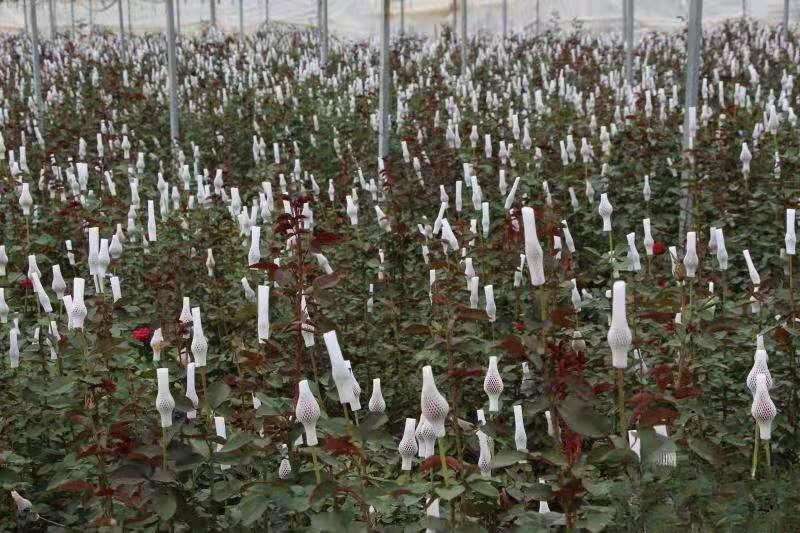
Roses netted and ready to be picked
Of course, rose planting is not as simple as imagined. During the growth process, inadequate treatment of pests and diseases, inappropriate temperature control, insufficient light, etc. will also affect the number of rose harvests.